Purple dead nettle (Lamium purpureum) is an easily foraged edible plant that is likely growing in your backyard or nearby. Often considered a common “weed,” it has been traditionally used for both culinary and medicinal purposes, making it a good foraging opportunity this spring!
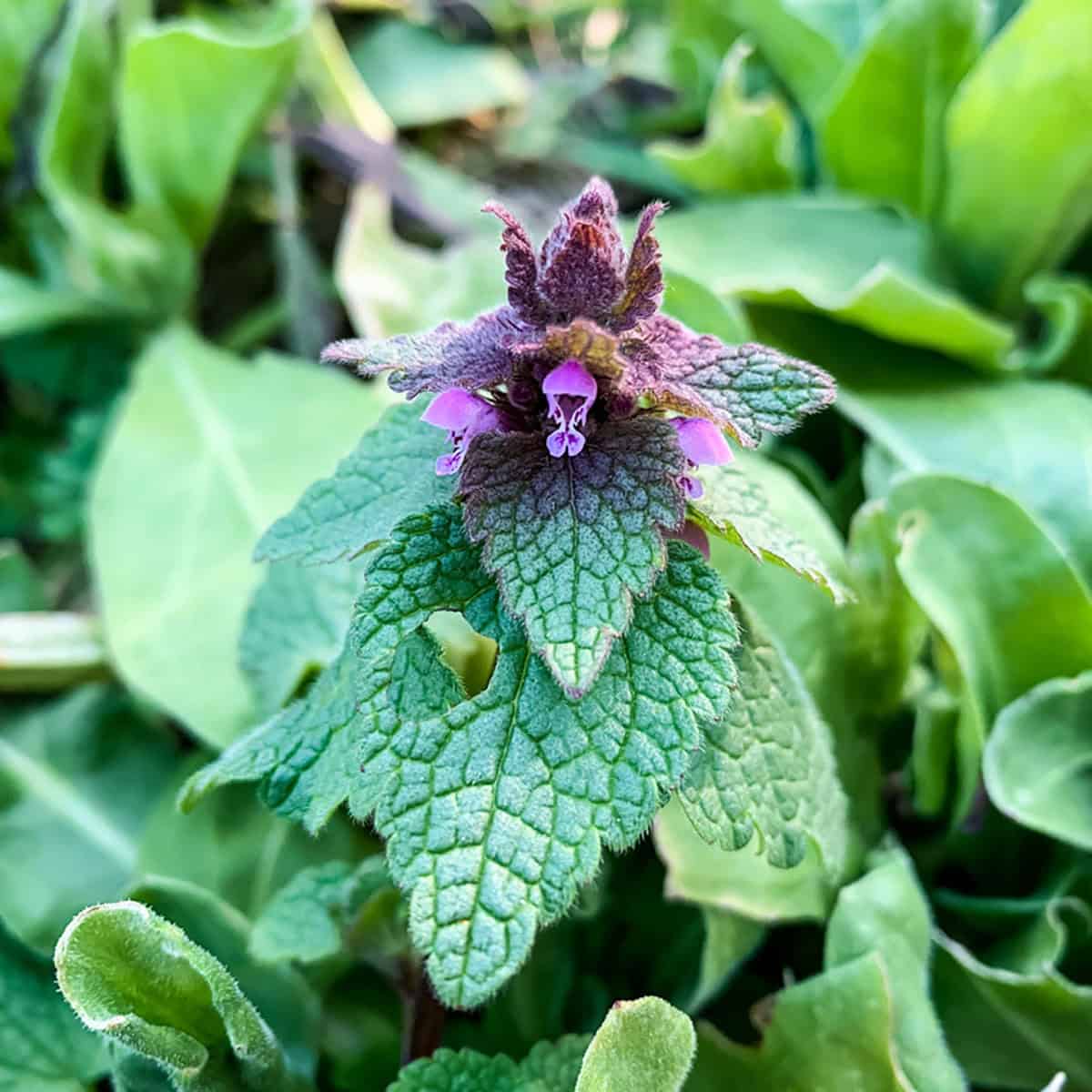
Want to save this post for later?
Wildcrafting Weeds
If you want to learn more about the edible and medicinal weeds that surround us and how to use them, check out my eBook: Wildcrafting Weeds: 20 Easy to Forage Edible and Medicinal Plants (that might be growing in your backyard)!
Foraging Purple Dead Nettle
Because of its widespread nature, foraging for purple dead nettle (Lamium purpureum) is usually pretty easy.
It is native to Europe and Asia, but has become commonplace in North American gardens and disturbed areas.
I can almost guarantee that you’ve seen purple dead nettle growing at one time or another.
You may not have realized it, as it can sometimes be fairly inconspicuous, but if you really start to pay attention to the plants around you, I’m certain that you will see it growing.
Related: What to Forage in Spring: 20 Edible and Medicinal Plants and Fungi
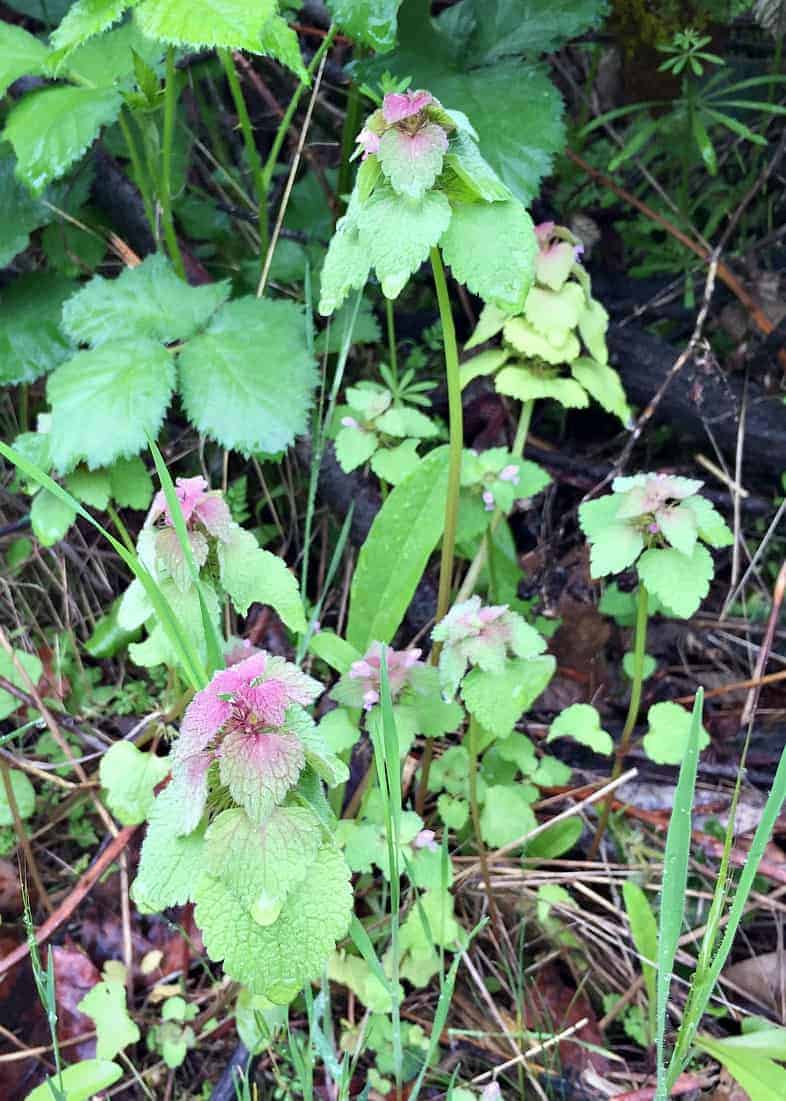
Purple dead nettle is one of those plants that when you see a picture of it, you immediately recognize it, but never knew what it was called.
This is how I was with plantain – I’d seen it my entire childhood, and up until I was almost 30 years old, before I had any idea of what it actually was!
I was happy to discover its benefits, just as I was with purple dead nettle.
It sometimes grows in huge patches, which can be annoying if that patch happens to be your garden, but it does make collecting it easier!
I have a good bit of it growing in my backyard, and I see it everywhere when I’m out on walks. I finally decided to look it up to see what it was, and was happy to find out that it’s edible and medicinal!
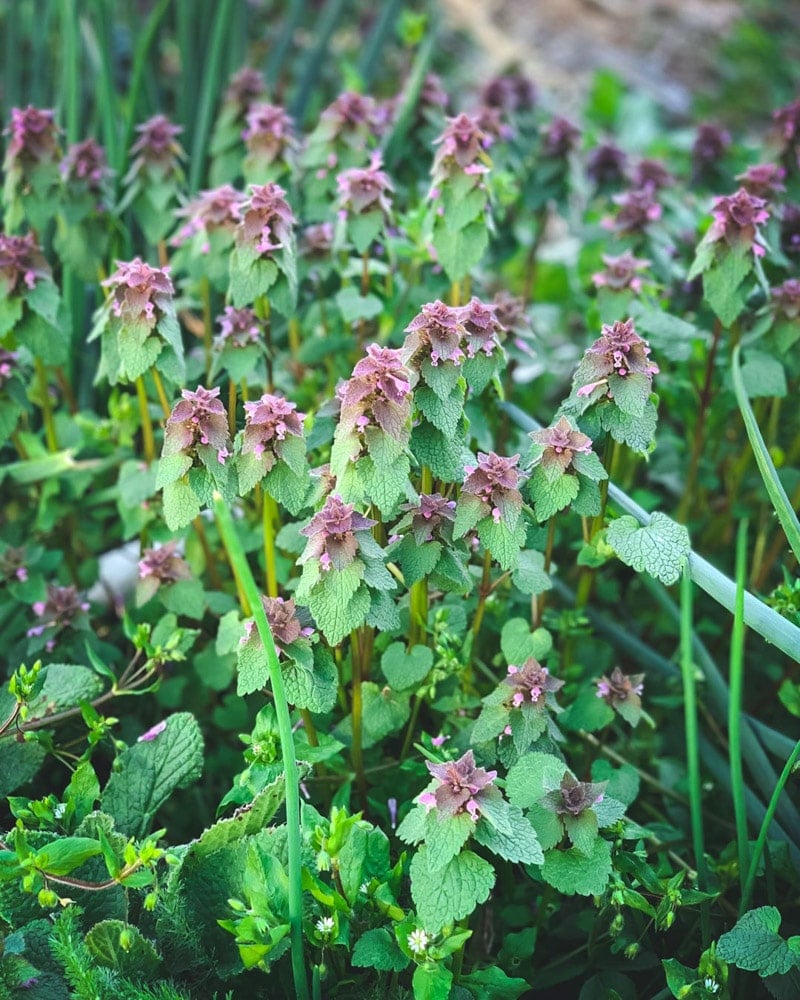
Identifying Purple Dead Nettle
Purple dead nettle is in the mint family, and is called “dead nettle” (or sometimes “deadnettle”) because of its apparent resemblance to stinging nettle, minus the sting.
This confuses me somewhat, because I don’t think it really looks like true nettles at all, but to each their own.
Purple dead nettle is easy to identify with its square stem (like all mint family plants), fuzzy leaves, and purple tops with little pink flowers.
They are usually fairly low growing, but can sometimes reach up to 8-10 inches tall.
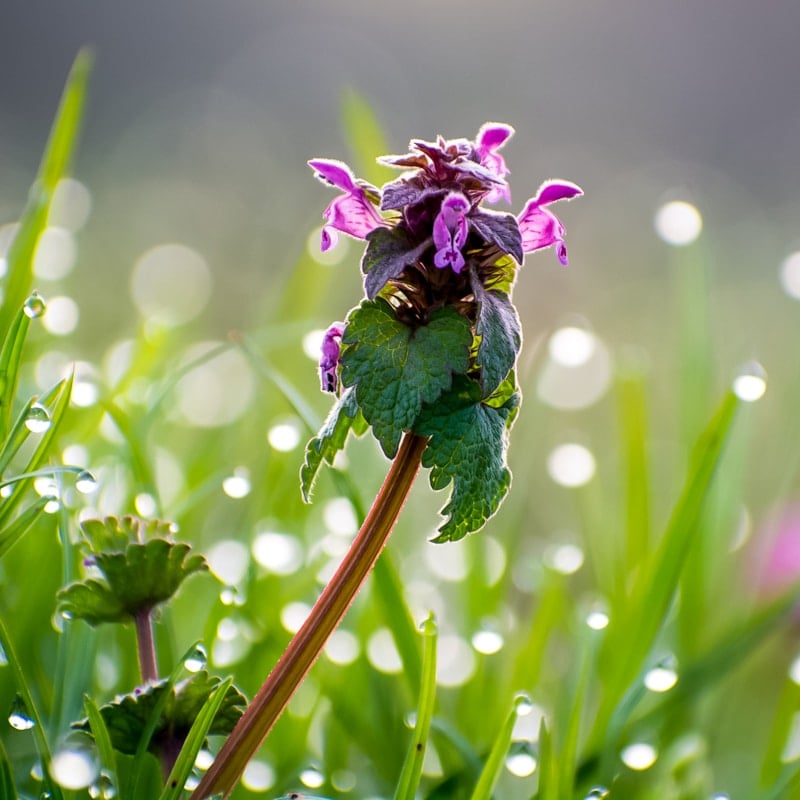
Purple Dead Nettle Look-alikes
Purple dead nettle does not have any toxic look-alikes.
It is sometimes confused for henbit (Lamium amplexicaule) which is closely related and another tasty edible weed.
The main difference between purple deadnettle and henbit is the arrangement of the leaves. Henbit has leaves that surround the stem, while purple dead nettle has triangle shaped leaves.
You can see the difference between purple deadnettle (left) and henbit (right) in the photo below.
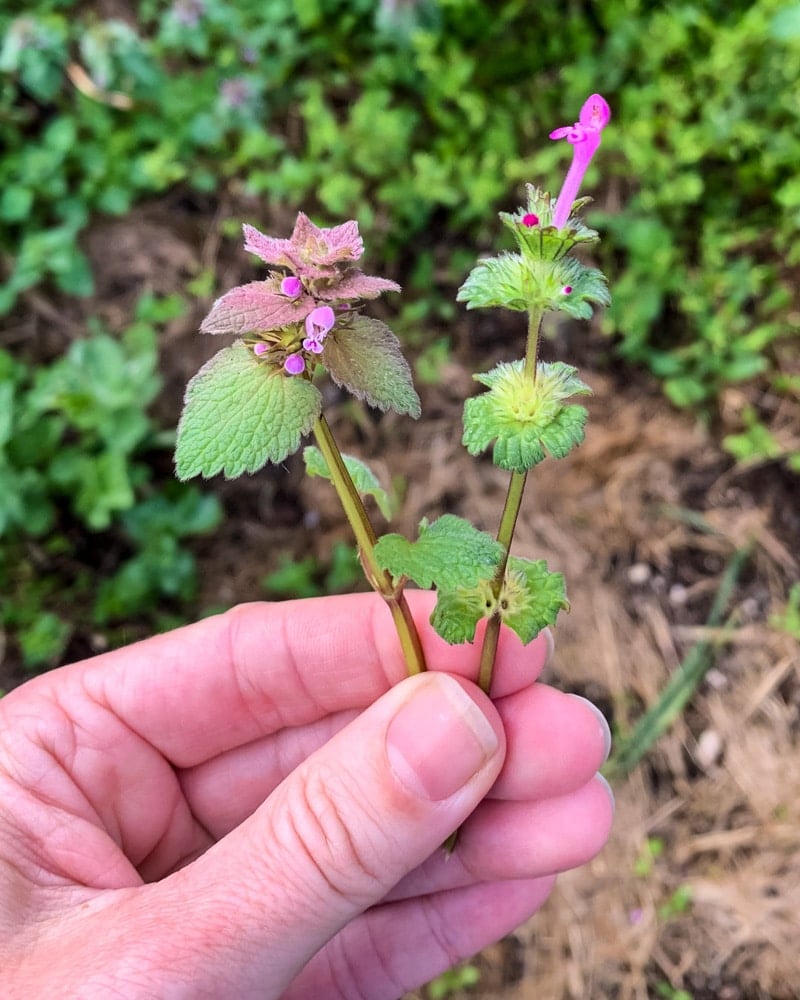
Edible Uses of Purple Dead Nettle
Purple deadnettle is not only a wild edible green, but a highly nutritious superfood. The leaves are edible, with the purple tops being even a little sweet.
Since the leaves are relatively fuzzy, they are better used as an herb garnish or mixed with other greens in recipes, rather than being the star of the show.
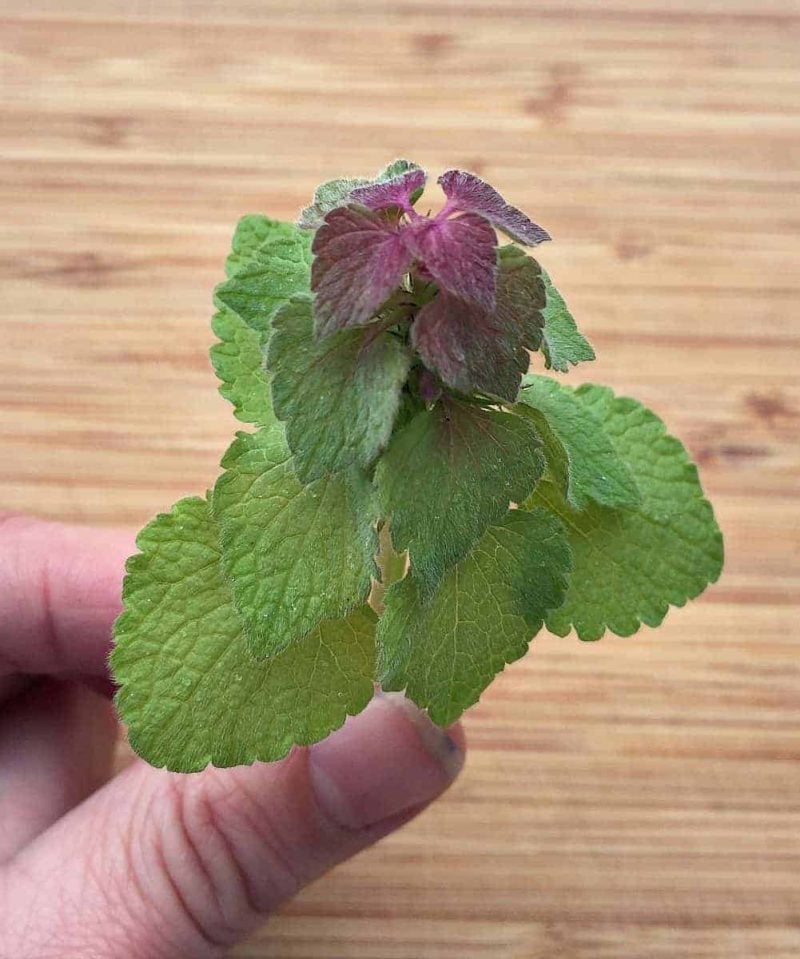
Use fresh dead nettle along with chickweed, dandelion greens, and other backyard weeds to make a wild greens pesto.
Purple deadnettle can also be added to soups, salads, or blended into smoothies. Basically any way that you would use any other green leafy vegetable or herb.
Related: 13 Early Spring Edible Wild Greens
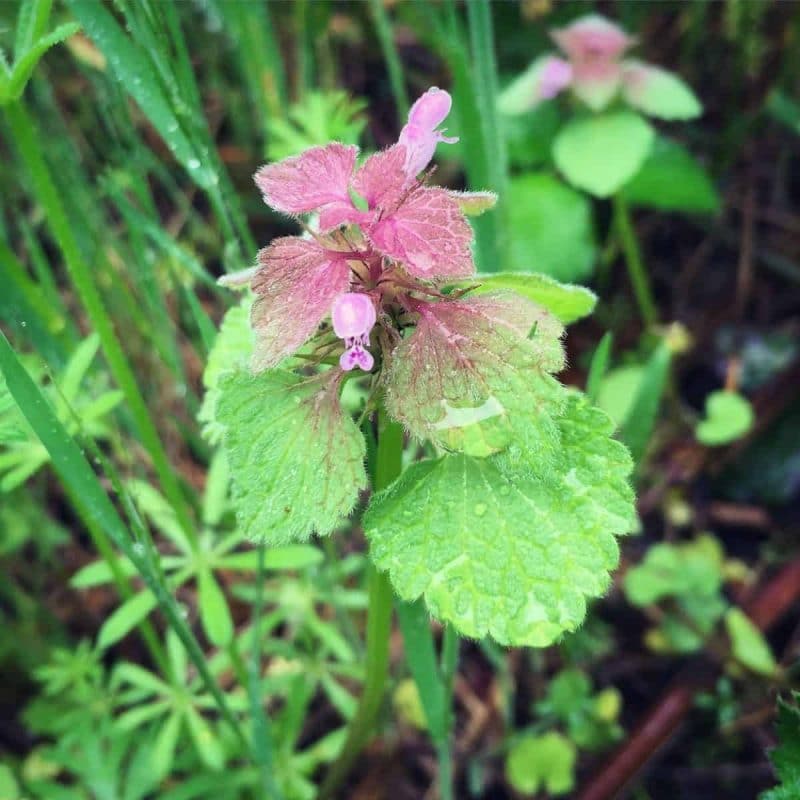
Medicinal Uses of Purple Dead Nettle
In herbal traditions, purple dead nettle has been described as having astringent, diuretic, diaphoretic, and mild laxative properties. It also contains compounds with anti-inflammatory, antibacterial, and antifungal potential, though more research is needed to fully understand its effects.
The leaves have been traditionally applied to minor wounds or cuts, sometimes as a poultice, though scientific evidence on its wound-healing properties is limited. This is similar to how you would use yarrow or plantain.
Purple dead nettle would also make be a good candidate for a homemade herbal salve.
Here is a post for how to make dead nettle salve three ways.
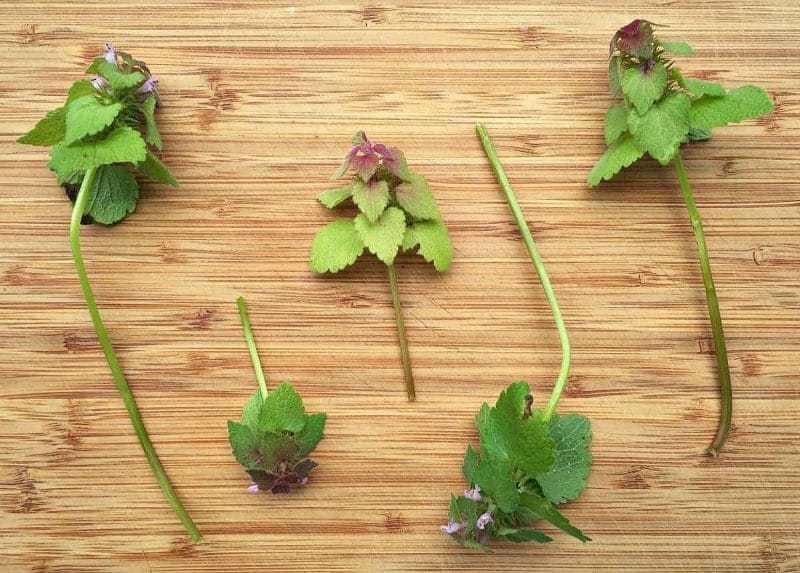
Purple dead nettle can be prepared as an infusion or tea, using either fresh or dried plant material. While some herbalists use it for its potential benefits, consuming it in large amounts may have a mild laxative effect.
It can alternatively be made into a tincture using the same method as this lemon balm tincture.
Some reports suggest it may support kidney function and help with seasonal allergies, but clinical research is still lacking. More studies are needed to confirm its effects on allergies.
Studies suggest that Lamium purpureum (purple dead nettle) contains bioactive compounds, including flavonoids and phenolic acids, that may contribute to its traditional medicinal uses. With the entire genus, Lamium, used in folk medicine for its antispasmodic, astringent, anti-inflammatory, and antiviral properties.
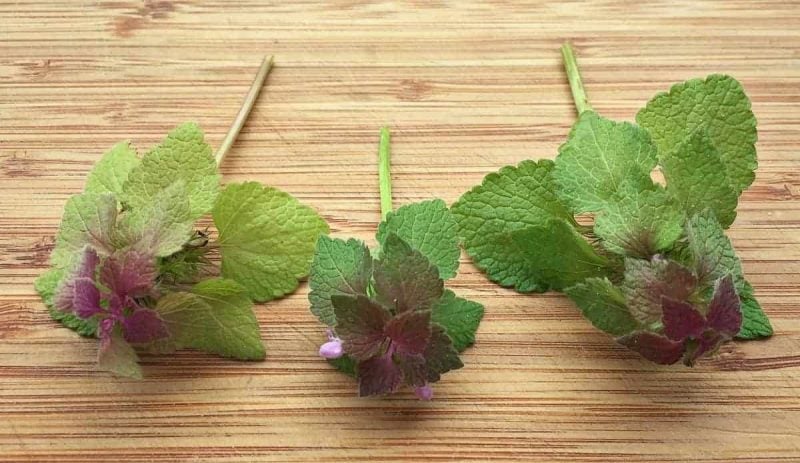
Other Uses for Purple Dead Nettle
Purple dead nettle can be given to chickens as a nutritious food, along with other weeds like henbit and chickweed. I chopped some up and gave it to my young chicks, and they went absolutely bonkers over it!
It is also an important plant species for bees.
Not only do bees seem to prefer it over other plants (even dandelion), but it is one of the first plants to flower in the spring. It may even flower in mild climates through the winter, making it a vital bee forage.
It can even be used to make a natural dye for wool and yarn!
Here are more ideas and recipes for how to use purple dead nettle.
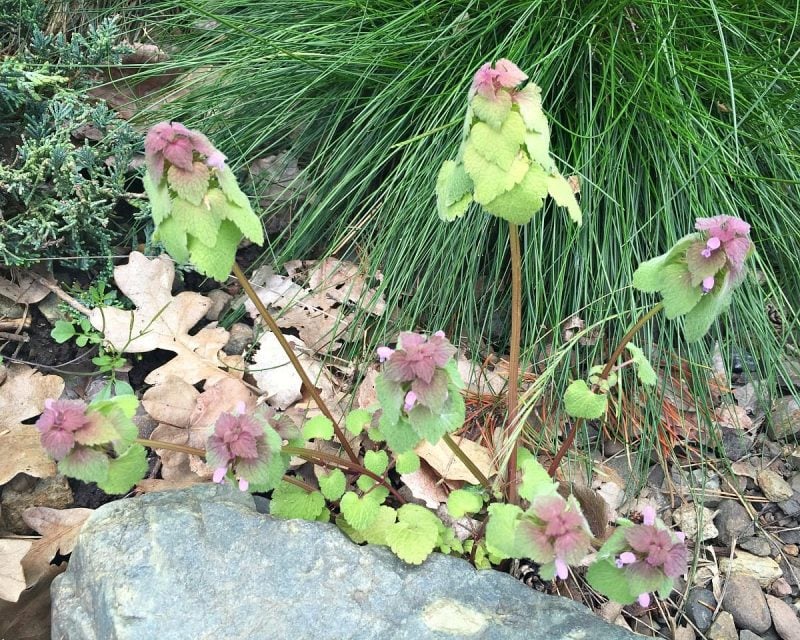
That’s a lot of benefits for one little plant that is often frowned upon! This is what I love about so many “weeds,” they are usually extremely beneficial for us, and easy to find.
I’m going to start picking more purple dead nettle while I can!
Want to learn more about medicinal herbs? Check out The Herbal Academy!
Do you have any purple dead nettle growing near you? Did you know that it was edible and medicinal?
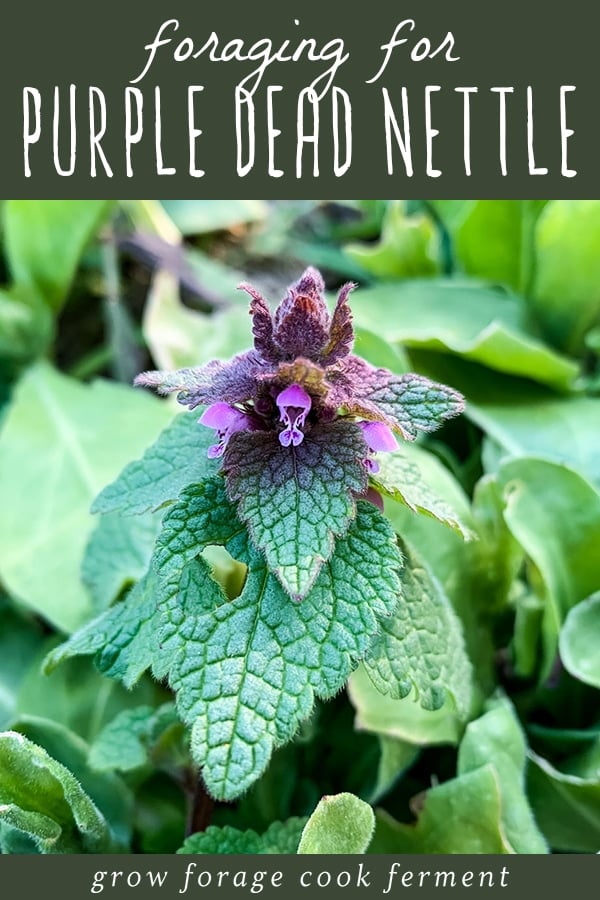

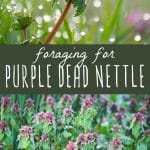
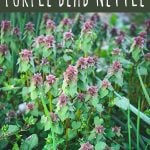
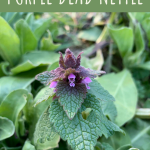
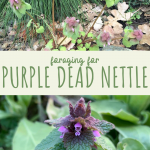
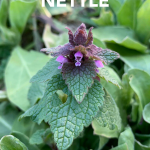

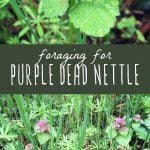
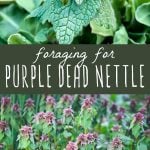

Do you know if deadnettle similar to hemp nettle? They look very similar.
They’re in the same family, Lamiaceae, but not the same genus.
Can o dry this in the dehydrator? I have a lot!
I haven’t tried dehydrating it, but it should be fine!
I have dried in my dehydrator many times. Works great.
I rounded up a few purple dead nettles today to try. While I was rinsing them off, I noticed some black “beads” on the bottom of the flowers. They’re not just marks on the flower, I could pick them off. It seems to be on each of the plants I picked though. Thoughts on what it could be? Thank you!
Hi Kayla. It’s hard to say, but it’s likely a bug’s tiny eggs or mites.
I’ve read that the seed is dispersed by ants, maybe it’s the seeds?
OMG I just looked up what this was and my land lord is coming to mow my lawn while I’m here at work… Does this grow back? is the 1st to sprout in the spring the most potent? Or is this something that comes back just as strong as the first sprout lings?
Hi there. It likely won’t come back until next spring!
Mine comes back every time we mow since it is spring. They grow back fast too.
Thank you so much for the information. I am new to trying out foraging and growing my own herbs. I currently have a bunch of purple dead nettle growing around our fence lines and in the yard. Can this be dried and stored in jars for later use like some other herbs I have read about?
Hi Angel. Yes, you can definitely dry your purple dead nettle!
Is purple dead nettle safe to consume during early pregnancy? So far, my research has provided mixed reviews
Personally, because of the mixed reviews, I’d stay away from it.
I have purple deadnettle growing in masses on my W.N.C. property. Thanks for sharing.
Can you safely dry and smoke it?
You can, but I haven’t tried or studied the effects.
Thanks for the great information! Is there a way to print it without all of the ads?
Hi Deb. I’m not really sure. You may be able to find an extension for your browser that reformats a page for printing.
Windows 10 has a ” Print to PDF” option. This option almost always converts the file to a PDF format. Select print and see if it’s an option. If you don’t have the option GOOGLE window print to PDF. I have 3 different Win 10 installs and the option loads on all three.
I save to Documents.
Hint: Check the name before saving the file or you may never find it. Another hint, If you can’t find a file click on the date bar on top of the listing It will change to the days dat or the last date .
Use the snip feature. Press Windows, shift & S on the keyboard. If you have the snip downloaded then a menu will drop down from the top. Clip on the blue box on the left. Crop what you want to print. It will go to your clipboard in your mouse. Go to a Windows Document. Paste it to the Windows Document and then you can print it. Hope this helps.
I would just like to be able to READ the article without all of the ads!!! I give up! I’m tired of x-ing out of everything just to try to read the text!!! 😡
I’m sorry, CJ. Having ads on my website allows me to continue to offer free content to my readers, while still making an income to support myself and family.
There are loads of ad blockers available. I haven’t had an ad in years. Use Firefox/Mozilla browser and take a look at all the free extensions they offer. No more ads anywhere!
On Chrome, there’s an extension called “Print Friendly & PDF”. It’s perfect when wanting to print articles, but not ads or images, or other info you don’t need printed.
There is an app named “Just Read” that takes out the ads, etc. I know it works in Chrome, not sure about other browsers.
I have new dead nettle growth in December. Can it be harvested this late in the year?
Definitely!
can spotted dead nettle be prepared and eaten like purple dead nettle?
Hi there. Yes, spotted dead nettle is edible and can be used the same way.